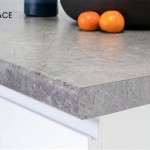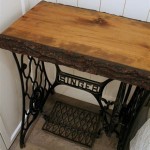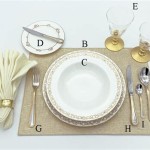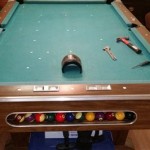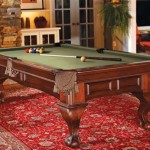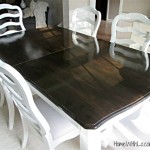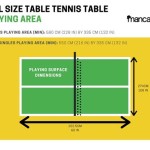Understanding 8-Person Round Table Sizes: Dimensions, Uses, and Considerations
The selection of appropriate furniture is crucial for fostering effective communication and collaboration in a variety of settings, ranging from corporate boardrooms to private dining rooms. Among the various table shapes and sizes available, the 8-person round table holds a unique position. This article will explore the dimensions, uses, and important considerations associated with 8-person round tables, providing a comprehensive understanding of their application in different environments.
Round tables, in general, are often chosen for their ability to promote equality and encourage interaction among participants. The absence of a head or designated end to the table removes hierarchical implications, fostering a sense of shared purpose and open dialogue. This is particularly important in brainstorming sessions, team meetings, and collaborative projects where diverse perspectives are valued and encouraged.
The specific size of an 8-person round table is critical to its functionality and the overall comfort of the individuals seated around it. Too small, and the table becomes cramped, hindering movement and potentially disrupting conversations. Too large, and individuals may feel isolated or struggle to effectively participate in the group dynamic. Therefore, a thorough understanding of the dimensions and associated considerations is essential for making an informed decision.
Understanding Standard Dimensions for 8-Person Round Tables
While there is no universally mandated standard for the exact dimensions of an 8-person round table, certain common ranges are observed based on accepted ergonomic principles and considerations for individual space. The most important factor is the diameter of the table, which dictates the total surface area available for each person. Providing adequate personal space is paramount to comfort and productivity.
Typically, an 8-person round table will have a diameter ranging from 48 inches (4 feet) to 72 inches (6 feet). A table closer to the 48-inch range will be more compact and suitable for smaller rooms, but it may feel somewhat crowded, especially if serving food or requiring substantial workspace for each individual. Conversely, a 72-inch table will provide ample space, but it requires a larger room and may make it more difficult for individuals to easily communicate with those seated across from them.
A diameter of 60 inches (5 feet) is often considered a good compromise, offering a balance between sufficient personal space and manageable table size. This allows for comfortable dining, effective collaboration, and relatively easy communication across the table. These dimensions are crucial when planning the layout of a space and ensuring that the table adequately serves its intended purpose without overwhelming the room or hindering movement.
The height of the table is another important dimension to consider. Standard table height generally ranges between 29 and 30 inches. This height is designed to be compatible with standard chairs, allowing individuals to sit comfortably with their legs underneath the table and their arms resting naturally on the surface. Deviations from this standard height can lead to discomfort and even ergonomic issues over extended periods of use.
Beyond the diameter and height, the thickness of the tabletop is also a factor, although it is less directly related to functionality. A thicker tabletop can contribute to the table's overall stability and durability, while also enhancing its aesthetic appeal. The material used for the tabletop construction significantly impacts the table's overall weight and ease of movement. Choosing the right material is crucial for aligning with the overall design and usage requirements.
Key Applications of 8-Person Round Tables
The versatility of the 8-person round table makes it suitable for a wide range of applications in both professional and domestic settings. Its design fosters collaboration and communication, making it a popular choice for meetings, conferences, dining, and social gatherings. Understanding these varied applications is essential for selecting the appropriate table size, material, and style to meet specific needs.
In corporate environments, 8-person round tables are frequently utilized in meeting rooms and conference centers. These tables facilitate interactive discussions, brainstorming sessions, and project planning meetings. The round shape encourages equal participation and open communication, promoting a collaborative atmosphere. They can also be used for smaller training sessions or workshops, providing a comfortable and conducive learning environment.
In the hospitality industry, 8-person round tables are a common feature in restaurants, banquet halls, and private dining rooms. They offer a flexible seating arrangement for larger groups, allowing diners to socialize and enjoy their meals in a comfortable setting. The round shape encourages conversation and creates a sense of intimacy, making it ideal for special occasions and gatherings. The tabletop material selection is also crucial in hospitality. Options such as wood, glass, or laminate can impact the table's durability and aesthetic appeal, contributing to the overall ambiance of the dining space.
In residential settings, 8-person round tables are often used in dining rooms and large kitchens. They provide ample seating for family meals and gatherings, while also creating a focal point in the room. The round shape promotes conversation and creates a more intimate dining experience. These tables can also be used for board games, puzzles, and other social activities, making them a versatile addition to any home. The style and finish of the table must complement the overall design of the home, reflecting personal preferences and creating a cohesive aesthetic.
Furthermore, the 8-person round table can adapt to less conventional uses. Exhibition spaces may use them as hubs for information sessions or demonstrations. Co-working spaces can benefit by providing smaller meeting areas. These versatile uses solidify their practical value.
Important Considerations When Choosing an 8-Person Round Table
Selecting the right 8-person round table involves several considerations beyond just the dimensions. Factors such as the available space, the intended use, the overall aesthetic, and the budget all play a crucial role in the decision-making process. Careful consideration of these factors will ensure that the chosen table meets the specific needs and preferences of the user.
The available space is a primary consideration when selecting a table. It's crucial to measure the room accurately and ensure that there is enough space to accommodate the table and chairs comfortably. Sufficient clearance should be allowed around the table for individuals to move freely and to prevent the room from feeling cramped. A general rule of thumb is to allow at least 3 feet of space between the edge of the table and any walls or obstacles. This will ensure that individuals can easily access their seats and move around the room without difficulty.
The intended use of the table is another important factor to consider. If the table is primarily used for dining, it should be large enough to accommodate place settings, serving dishes, and other items. If the table is used for meetings or collaborative work, it should provide ample workspace for each individual. If the table is used for multiple purposes, a versatile design with adjustable features may be the best option. Materials should also be considered as they factor into the table's lifespan and durability, which is important for highly frequent usage in places like conference rooms or dining rooms.
The overall aesthetic of the table should complement the existing décor of the room. The table should be visually appealing and blend seamlessly with the surrounding furniture and accessories. Consider the style, color, and material of the table to ensure that it aligns with the overall aesthetic of the space. For example, a modern room may benefit from a sleek, minimalist table with a glass or metal finish, while a more traditional room may be better suited for a wooden table with ornate details.
Budget is always a consideration when purchasing furniture. 8-person round tables range in price from relatively inexpensive to quite expensive, depending on the materials, construction, and brand. Determine a realistic budget before starting the selection process and focus on tables that fall within that range. Consider the long-term value of the table and invest in a high-quality piece that will last for many years. It's often better to spend a little more initially on a durable and well-designed table than to settle for a cheaper option that will need to be replaced sooner.
Finally, consider the ergonomics of the table and chairs. Ensure that the table height is comfortable for individuals to sit at and that the chairs provide adequate support. Choose chairs with appropriate seat height and back support to promote good posture and prevent discomfort. Consider adding cushions or other accessories to enhance the comfort of the seating arrangement.
In conclusion, choosing an 8-person round table requires careful consideration of various factors, including dimensions, intended use, available space, aesthetic preferences, and budget. By thoroughly evaluating these factors, individuals can select a table that meets their specific needs and enhances the functionality and aesthetics of their space.

20 Dining Room Design Ideas Round Table Sizes Dimensions

Round Dining Tables Connecticut In Style Table Sizes Dimensions 8 Person

Dining Table Dimensions Measurements

Creative 8 Person Dining Table Size For Your Eoyment Sizes Outdoor Diy

Dining Table Guide Size Shape Seating Sizes Round

Dining Tables The Best Fit

Round Table Measurements My Decorating Tips

The Right Size Dining Table For Your Space

Creative 8 Person Dining Table Size For Your Eoyment Sizes Design Dimensions

Dining Table 8 People Dimensions Cm Google Search
Related Posts

